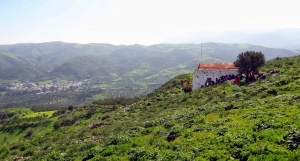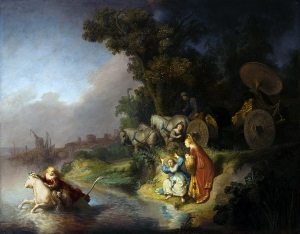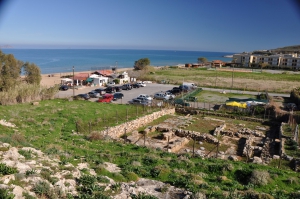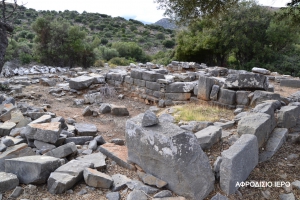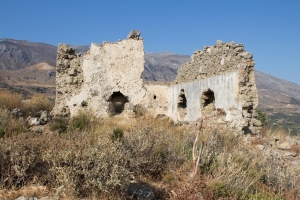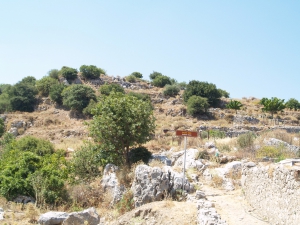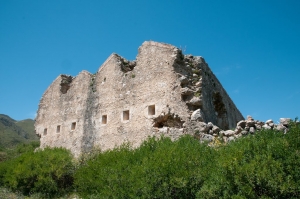The fort Castel Belvedere or Kastelos was built on the isolated hill Kastellos, that was accessible only from its south side, near the villages of Ano and Kato Kastelliana. Here was the site of the ancient city Priansos, a powerful and great town that minted its own currency and had its seaport at Inatos (current Tsoutsouras).
According to Greek mythology, Europa was the beautiful daughter of King of Phoenicia, Agenor and sister of Cadmus (founder of Thebes). Once, while playing with her friends on the beach, Zeus saw her and fell in love with her.
At the east side of the long Karteros bay there is the small hill of Paleochora that hosted the Minoan settlement of Amnissos. The name is mentioned as a-mi-mi-so in the Linear B tablets. Amnisos findings include a Minoan harbor, several buildings and an outdoor archaic sanctuary, where Zeus was worshiped. The habitation Amnisos started in the 19th century BC.
The small ancient Sanctuary of Afrodision Iero (Aphrodite Temple) is located near the village Lenika and dates back from 10th century BC. The same place was used in the 2nd BC century for building a larger two-aisled temple of Ares and Aphrodite, as evidenced by inscriptions found here.
One of the many Turkish towers (Koules) built by the Turks in Crete is that of Plakias at South Rethymno. It was built on a hill of conglomerate grounds, with steep cliffs at its east and south sides, inside a fortified enclosure.
At the banks of the river Geropotamos, at position Agia Triada, the Minoans built a small palace that was excavated by the Italian Archaeological School at Athens in 1902-1914. This Royal Villa was built in the 16th century B.C. (New Palace period) and was probably used as a summer villa for the king of Phaestus or as permanent residence after the destruction of Phaestus palace in 1450BC.
Ancient Axos was built on the hill southeast of the modern village and is considered one of the most important ancient towns of ancient Crete. The area was already inhabited since the Preminoan Era, but the city reached its peak during the Archaic period.
The most important passage of Rethymnon prefecture was that of Agios Vasilios (south), through where Turks and Greeks traveled from Mesara plain to Sfakia area. Thus, several towers (kouledes) were built. Such one Koules was built near the entrance of the gorge Kourtaliotis, near the village Koxare. The tower was partially destroyed by the Cretan rebels in 1896.





